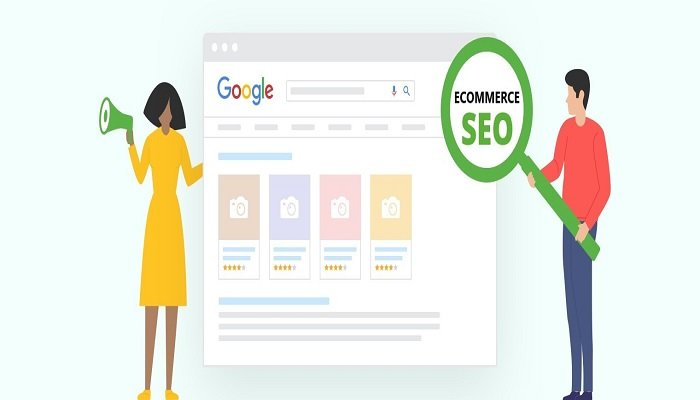How to Optimize Your Ecommerce Store for Maximum Revenue Growth
Want more sales? Discover proven strategies to optimize your ecommerce store for maximum revenue. Get ready to scale up your business!

Is your e-commerce store generating the revenue it should? Many online businesses struggle with underperformance, often due to poor optimization strategies. According to a recent study, 69% of online shopping carts are abandoned before checkout, leading to billions in lost revenue annually.
However, with the right tactics, you can significantly increase conversions, drive traffic, and boost your overall sales.
Optimizing an e-commerce store requires a mix of technical improvements, marketing strategies, and user experience enhancements. Every aspect of your store should work cohesively to create a seamless and efficient shopping experience for your customers.
Here we list some of the important things you to take care of:
1. Improve Website Performance and User Experience
Optimize Page Speed and Load Time
Slow-loading pages frustrate online shoppers, causing them to abandon their carts and leave without making a purchase. When a website takes too long to load, potential customers lose patience and look for faster alternatives. That is why partnering with the best e-commerce SEO agency can simplify this process. They help optimize page speed by reducing image sizes, improving server response times, and implementing caching strategies.
-
Furthermore, they use CDN (Content Delivery Networks) to distribute content efficiently and optimize images with WebP format to reduce file sizes.
-
Minimizing HTTP requests and implementing lazy loading for images and videos can further enhance performance.
Enhance Mobile Responsiveness
Over 70% of e-commerce traffic comes from mobile devices. A mobile-first design approach ensures an optimal user experience. Test mobile usability using Google’s Mobile-Friendly Test and enable accelerated mobile pages (AMP) for faster loading.
2. Optimize Product Pages for Higher Conversions
Leverage High-Quality Images and Videos
-
Use multiple product images from different angles and implement zoom-in features for detailed views.
-
Incorporate 360-degree product views and short explainer videos to enhance visualization and engagement.
Write Persuasive Product Descriptions
Focus on a benefit-driven copy rather than just features. Include technical specifications where applicable and use clear, concise language. Implement SEO keywords naturally to improve search visibility.
Display Social Proof and Reviews
-
Showcase user-generated content (UGC) like customer photos and highlight star ratings and testimonials.
-
Use trust badges and secure payment icons to enhance credibility and feature video testimonials for greater engagement.
Streamline the Checkout Process
Reduce Cart Abandonment
-
Offer guest checkout to simplify the process and provide multiple payment options, including digital wallets.
-
Optimize form fields to auto-fill user information and display a progress bar to indicate checkout steps.
Implement One-Click Checkout and Upselling Techniques
Use saved payment details for returning customers and offer bundled discounts to encourage higher order values. Show personalized recommendations based on browsing history and utilize exit-intent popups with limited-time offers.
3. Enhance SEO and Content Marketing Strategy
Optimize for E-commerce SEO
Conduct keyword research using tools like Ahrefs or SEMrush. Implement structured data markup (schema) for better visibility and optimize meta titles, descriptions, and URL structures. Focus on internal linking to enhance site navigation.
Invest in Content Marketing
-
Create high-value blog content around trending industry topics and use video content to engage customers visually.
-
Develop interactive quizzes and buying guides to assist in decision-making and maintain a content calendar for consistent publishing.
4. Leverage Email and Retargeting Campaigns
Use Automated Email Sequences
Implement abandoned cart emails with personalized incentives and send post-purchase follow-ups for reviews and upsells. Utilize drip campaigns for nurturing leads and offer exclusive discounts to encourage repeat purchases.
Retarget Visitors with Ads
-
Use Facebook Pixel and Google Retargeting Ads to track user behavior.
-
Segment audiences based on purchase history and interests and run dynamic ads featuring products users viewed but didn’t purchase. Offer time-sensitive discounts to create urgency.
5. Implement Data-Driven Decision Making
Use Analytics to Track Performance
Monitor Google Analytics and heatmaps to understand user behavior. Track conversion rates, bounce rates, and session durations. A/B test landing pages, CTAs, and checkout processes. Utilize AI-driven analytics tools for predictive insights.
Personalize Customer Experience
-
Use AI chatbots to provide instant customer support and offer personalized product recommendations using machine learning.
-
Segment customers by demographics, behavior, and purchase patterns.
-
Enable loyalty programs to reward repeat customers.
Conclusion: Unlock Your E-commerce Store’s Full Potential
Optimizing your e-commerce store for maximum revenue growth requires a strategic blend of technical improvements, customer-centric design, and data-driven marketing. By enhancing user experience, streamlining checkout, leveraging content marketing, and using advanced analytics, you can significantly boost conversions and increase your sales or hire an ecommerce SEO agency and watch your e-commerce business thrive.
What's Your Reaction?
















.jpg)
.jpg)


